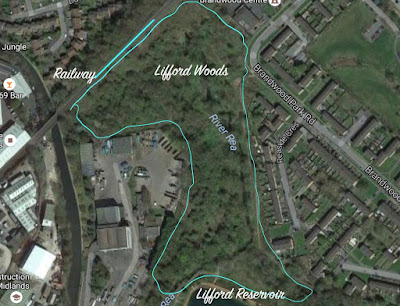To introduce or not? Woodland Wednesday number 7 at Highbury Park
Today's theme - To introduce or not
Many thanks to Anne Brookes from B&BCWT for a great contribution of potted plants from EcoPark. The selection included-
We began the session with a discussion about the crafting of a plantation, which theoretically aims to enhance or 'speed up' habitat development by a variety of means including-
Richard Mabey says "Hybrids between native rarities and more vigorous intruders are despised and sometimes destroyed because, from a niggardly view of biodiversity, they are diluting the genetic purity of the original. It is as if individual trees with character and rich biographies can continue to have an existence only through the pickling (by cloning, for example) of their unique genetic identity; and that by being carried forward by the eddying, unpredictable streams of reproduction, as all other organic life is, would obliterate their authentic essence."
 |
| Wood sedge and other plants from Eco Park |
- Wood Sedge
- Wood Sorrel
- Primrose
- Ground Ivy
- Yellow Archangel
- Sweet Woodruff
- Wood Speedwell
- Wood Millet
- Violet
- Opposite Leaved Golden Saxifrage
We began the session with a discussion about the crafting of a plantation, which theoretically aims to enhance or 'speed up' habitat development by a variety of means including-
- the creation of dead wood through coppicing
- managing access
- recording and monitoring wildlife
- introducing relevant species (mostly ground flora or trees) to improve biodiversity
In most discussions of this nature there are varied ideas about what should or should not be introduced; some purists might suggest 'add nothing and allow nature to take its course', others will suggest adding flowering plants, such as Daffodils, Lilly of the Valley or Snowdrops for aesthetics, whilst others would suggest add nothing unless it's of proven local provenance and grows relatively locally elsewhere. Bluebells for example, should be Hyacinthoides non-scripta and not the spanish variety H. hispanica or known hybrid.
Likewise, Primrose, Primula vulgaris, another contentious species is widely introduced in plantations, the following information from wikipedia is worthy of note
Likewise, Primrose, Primula vulgaris, another contentious species is widely introduced in plantations, the following information from wikipedia is worthy of note
In appropriate conditions, the Primrose can cover the ground in open woods and shaded hedgerows. In more populated areas it has sometimes suffered from over-collection and theft so that few natural displays of primroses in abundance can now be found. However it is common on motorway verges and railway embankments where human intervention is restricted. To prevent excessive damage to the species, picking of primroses or the removal of primrose plants from the wild is illegal in many countries, e.g. the UK (Wildlife and Countryside Act 1981, Section 13, part 1b).
A pink form is widely seen, growing amongst the much more common yellow forms; this may be a genetic variant rather than a garden escape. Occasional red forms are more likely to be naturalised from garden varieties. (Wiki).
Following discussion, we agreed to plant the Primrose sets brought along by one of volunteers, even though we were informed the plants were taken from a nearby garden but were "wild". We agreed that should any produce flowers other than creamy yellow coloration, they will be taken out.
We applied a firm NO thank you for an offer of Bluebells - broad leaved, large bulbs - and probably hybrids.
Following discussion, we agreed to plant the Primrose sets brought along by one of volunteers, even though we were informed the plants were taken from a nearby garden but were "wild". We agreed that should any produce flowers other than creamy yellow coloration, they will be taken out.
We applied a firm NO thank you for an offer of Bluebells - broad leaved, large bulbs - and probably hybrids.
 |
| Hyacinthoides non-scripta |



Comments
Post a Comment